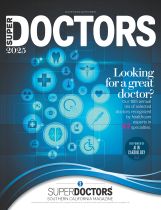January 18, 2017
By Andy Bindman, MD
With the change in administration, I am departing as the AHRQ Director. This is not my preference, but a reality of our political process. I’ll soon be leaving to return to my work as a primary care physician and a health services researcher at the University of California San Francisco. My close partner, AHRQ’s terrific deputy director, Sharon Arnold, will take over as the Agency’s acting director.
As I prepare to leave, I am excited about AHRQ’s future and its readiness to support transformation to an improved health care system. In meetings with staff at AHRQ, I’ve described our challenge as bringing Moneyball to medicine. It’s my way of pointing out how major league sports have integrated data analytics into their workflow to improve team performance. I think there is a parallel opportunity for us in health care.
Moneyball is a movie based on the true story of Billy Beane, the general manager of the Oakland A’s. He’s a ballplayer-turned-executive, played by Brad Pitt, who finds himself stuck with an underperforming team that makes roster choices based largely on the opinions of "expert" scouts. While these scouts know a lot more than the average person does about the star potential of young players, they also have a remarkable number of misfires, leading the team to spend money on players who never pan out.
The organization’s fortunes shift dramatically, however, when Beane takes a radical new approach. With a limited budget compared to his competitors, he adopts the predictive lessons of big data rather than the opinions of scouts to select players for his team. Billy Beane did not invent the data analytic strategies used to make more accurate predictions about player success, but he was a radical in incorporating this strategy into the daily workflow of running an organization—in his case, a baseball team.
The data analytics that guided Beane and his staff weren’t obscure or particularly hard to understand. He simply made a commitment to using them. In the process, he fielded a team that broke the American League record for consecutive wins and came very close to winning the World Series. His success has led to a rapid transformation in the use of data not only among other baseball teams, but across all of professional sports.
For the most part, clinicians function like baseball "scouts." We bring a special knowledge to improving health informed by our experience. We are underperforming, however, by not making a stronger commitment to a data-driven, evidence-based approach. We have not mustered the courage Billy Beane showed in running his organization. Like him, we need to base our decisionmaking less on limited direct experience and more on data analytics that can be applied to our routine clinical workflow. It is scary to take this leap, because the stakes are higher for health than they are for baseball. But then again, so are the rewards if we do.
With the growing availability of digitized clinical data and an emerging cadre of sophisticated statistical approaches developed by health services researchers, there is a goldern opportunity for us in health care to make a transformational change that can improve the quality and safety of care. A health care organization takes an important step toward becoming a learning health care system when it incorporates these approaches into its routine workflow of care.
During my time at AHRQ, we have significantly increased our efforts to support the transformation of health care organizations into learning health care systems. The learning health care system is a model in which clinical practices systematically participate in the generation, adoption, and application of evidence. At AHRQ, we believe it holds great promise to improve the quality and safety of patient care. In a recent blog on the topic, I noted how current health care trends are presenting new opportunities for such advances.
While patients are the ultimate beneficiaries of increased use of evidence, AHRQ is focusing its efforts toward the clinical leaders of health care organizations. We believe these individuals can become the Billy Beane change agents who can support local efforts to ensure evidence becomes a routine part of everyday practice. Sharon and I envision the establishment of a learning network between AHRQ and clinical leaders within health care organizations to co-create the tools and approaches that are most likely to be of help.
It has been a privilege to serve as the Director of AHRQ, and I’m grateful to have had the opportunity. I’ve been impressed from Day One by Agency staff members’ breadth of talent, their commitment to scientific rigor, and their passion for improving the quality and safety of patient care.
As I prepare to leave, I am not only gratified by the gains we’ve made in my short time, but also deeply optimistic about the Agency’s prospects for advancing its mission. AHRQ is not a payer or a regulator, but a facilitator that uses research and evidence to support constructive improvements in health care.
Moneyball was a great story. But AHRQ has the potential to contribute to an even greater story by helping to incorporate data analytics and evidence into the practice of medicine. Who knows, maybe Brad Pitt will someday star in the sequel—Medicineball.

